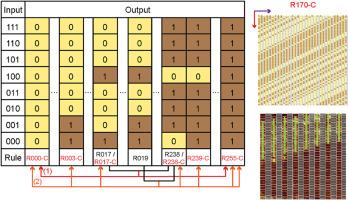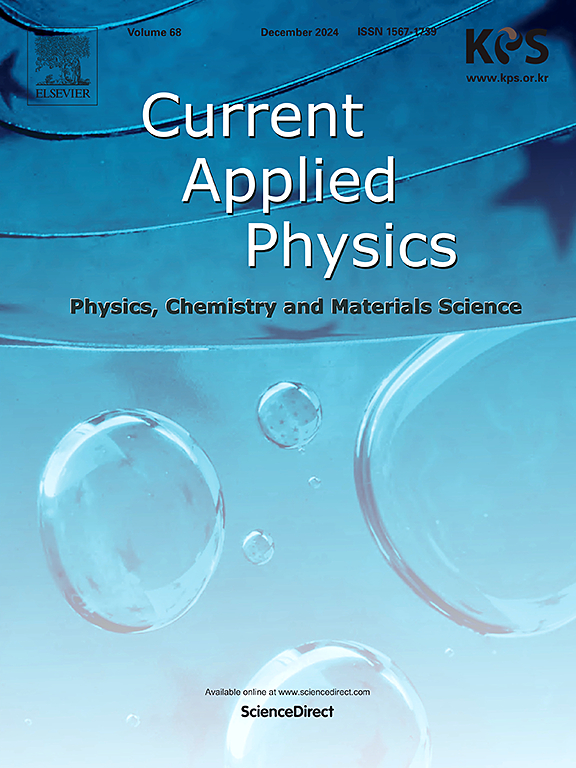使用组合3输入逻辑规则的可伸缩的算法DNA格组装
IF 3.1
4区 物理与天体物理
Q3 MATERIALS SCIENCE, MULTIDISCIPLINARY
引用次数: 0
摘要
基于dna的自组装算法为并行计算和纳米级模式生成提供了一个通用的平台。由DNA规则块构建的逻辑门使可编程晶格能够执行复杂的数学运算。在这里,我们提出了一种使用3-输入1-输出逻辑规则生成多种算法模式的组合方法。通过结合互补规则集(例如,{R017, R238})和非互补集(例如,{R019, R238}),我们设计了特定的规则和算子块,减少了所需的唯一块的数量,同时扩大了可实现逻辑函数的范围。利用原子力显微镜对得到的DNA晶格进行了实验验证,观察到的模式与理论预测非常吻合,证明了高保真度和可靠性。与传统的单规则组件相比,这种方法提高了可扩展性和效率,并为构建纳米尺度的复杂计算架构提供了一条实用途径,在分子计算、可编程纳米材料和基于dna的信息处理方面具有潜在的应用前景。本文章由计算机程序翻译,如有差异,请以英文原文为准。

Scalable assembly of algorithmic DNA lattices using combined 3-input logic rules
DNA-based algorithmic self-assembly provides a versatile platform for parallel computation and nanoscale pattern generation. Logic gates constructed from DNA rule tiles enable programmable lattices capable of performing complex mathematical operations. Here, we present a combinatorial method for generating diverse algorithmic patterns using 3-input 1-output logic rules. By combining complementary rule sets (e.g., {R017, R238}) and non-complementary sets (e.g., {R019, R238}), we designed specific rule and operator tiles that reduce the number of unique tiles required while expanding the range of implementable logic functions. The resulting DNA lattices were experimentally validated using atomic force microscopy, and observed patterns closely matched theoretical predictions, demonstrating high fidelity and reliability. This approach improves scalability and efficiency compared with conventional single-rule assemblies and provides a practical route toward constructing complex computational architectures at the nanoscale, with potential applications in molecular computing, programmable nanomaterials, and DNA-based information processing.
求助全文
通过发布文献求助,成功后即可免费获取论文全文。
去求助
来源期刊

Current Applied Physics
物理-材料科学:综合
CiteScore
4.80
自引率
0.00%
发文量
213
审稿时长
33 days
期刊介绍:
Current Applied Physics (Curr. Appl. Phys.) is a monthly published international journal covering all the fields of applied science investigating the physics of the advanced materials for future applications.
Other areas covered: Experimental and theoretical aspects of advanced materials and devices dealing with synthesis or structural chemistry, physical and electronic properties, photonics, engineering applications, and uniquely pertinent measurement or analytical techniques.
Current Applied Physics, published since 2001, covers physics, chemistry and materials science, including bio-materials, with their engineering aspects. It is a truly interdisciplinary journal opening a forum for scientists of all related fields, a unique point of the journal discriminating it from other worldwide and/or Pacific Rim applied physics journals.
Regular research papers, letters and review articles with contents meeting the scope of the journal will be considered for publication after peer review.
The Journal is owned by the Korean Physical Society.
 求助内容:
求助内容: 应助结果提醒方式:
应助结果提醒方式:


